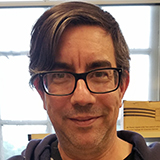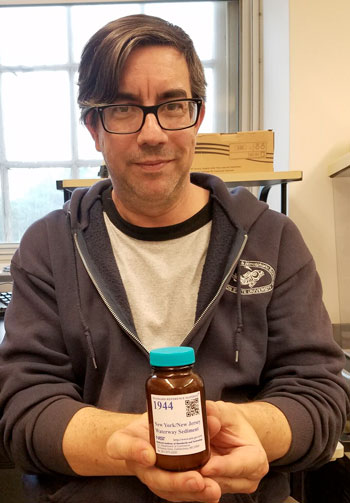Notice of Online Archive
This page is no longer being updated and remains online for informational and historical purposes only. The information is accurate as of the last page update.
For questions about page contents, contact the Communications Division.

visiting assistant professor of chemistry
Ph.D., chemistry, Oregon State University
What I’m studying:
“I’m an atmospheric chemist. I discovered in college that the atmosphere is a fascinating portion of our ecosphere, and it’s a slice of the environment that’s less studied. It’s a tricky thing to study in a lot of ways, and it’s a relatively young field. My specific area of interest is atmospheric transport of environmental pollutants. Human activity creates byproducts, which we release into the environment. They move spatially, and they may transform chemically into different compounds. There can be unintended consequences that these chemicals have on the environment. I’m all about that process, specifically as it’s related to the atmosphere.”
What inspired me:
“I taught at a community college for five years, and it’s really where I learned to teach. It’s a really fabulous environment for high-impact teaching. You have the potential to be trajectory changing. You have students coming in who are maybe just dipping their toes into higher education. There are a lot of older-than-average students and some K-12 teachers who are coming back for continued education. So this gives you a very diverse environment with a lot of different voices. People don’t just succeed at their goals, they set new goals and achieve those, and it’s tremendously rewarding to be a part of that process.”
What I do to prepare for class:
“I like to storyboard my classes. It’s a technique I picked up from Alfred Hitchcock. I organize my lectures on index cards that I’ll then translate to chalkboards in class. I think it’s really helpful, especially for my intro classes, because it helps me pace myself so I write at a nice note-taking speed, and it ensures that my board presentation is nice and organized and translates nicely to the page.”

What I’m holding:
“This is a $750 bottle of dirt. It’s New York/New Jersey sediment from the National Institute of Standards of Technology. It comes with a 20-page document that gives you the concentration of all the contaminants that it contains. It has a certificate of authenticity. It’s significant to me because in order to measure anything you need to measure it in reference to something else—a standard. This is the gold standard for soil. It was collected in 1974 and homogenized, so that if you bought it in 2002 it would be the same thing as what you’d buy today. So if I want to know if a measurement technique for a contaminant in soil is accurate, I’d analyze this and compare my values to NIST. It was one of the first things I bought when I received grant money for research in 2014.”
Categorized in: New Faculty

